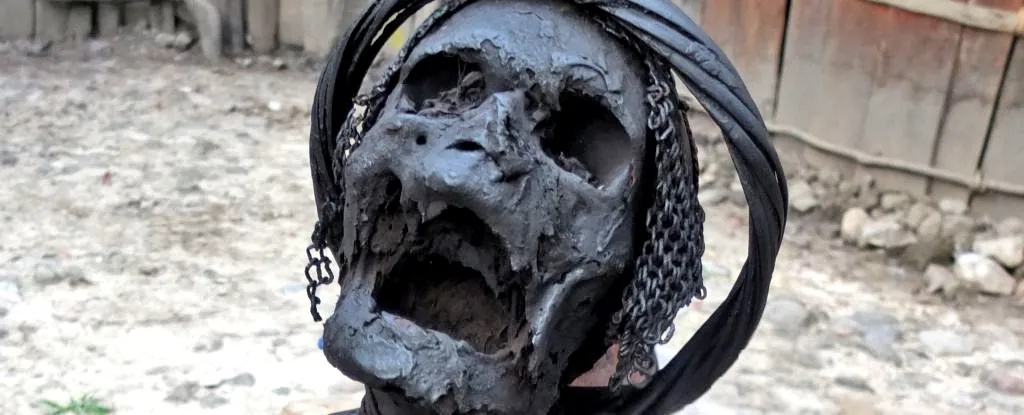
Ancient Mummies Rewrite History: Discovery Shocks Archaeologists!
2025-09-15
Author: Ling
Incredible Mummification Practices Unearthed!
The ancient art of mummification, a practice etched in history for millennia, is now revealing astonishing new dimensions. Recent findings challenge our understanding of where and when these rituals originated, with bones exhibiting signs of intentional mummification emerging from Southeast Asia and southern China, dating back an astonishing 12,000 years!
Older Than the Egyptians?
This timing is jaw-dropping, as it predates the iconic mummification techniques of the Chinchorro people of Chile and the ancient Egyptians by thousands of years. While the Egyptians are famously known for their burial customs dating back 5,600 years, this new discovery shines a light on earlier societies and their distinct practices.
A Unique Technique Unveiled!
What’s more intriguing? These early cultures employed an unusual mummification technique involving prolonged smoking over an open flame—a stark contrast to the drying and embalming methods we associate with Egypt. Led by archaeologist Hsiao-chun Hung from the Australian National University, researchers suggest that this method mirrors burials observed among cultures in Australia and New Guinea, hinting at a shared heritage.
Cultural Connections Through Time!
The researchers assert that their findings reveal a consistent set of cultural beliefs and practices surrounding death, persisting among hunter-gatherer communities for over 10,000 years. Many of these individuals were found in curled, fetal positions, bound tightly, with traces of burning evident on their bones—clues leading to questions of how funerary customs were executed.
Digging Deeper: Analyzing the Bones!
The research team meticulously examined 69 bone samples from 54 ancient burial sites scattered across southern China, northern Vietnam, and Indonesia. They utilized advanced technologies like X-ray diffraction and Fourier-transform infrared spectroscopy to identify heat exposure and alterations in bone structure. Remarkably, 84% of the samples displayed evidence of heat application, with some exhibiting intriguing soot deposits.
A Life Story Told by Bones!
What these discoveries suggest is a complex tapestry of funerary customs, possibly resembling the modern-day rites of the Dani people in New Guinea, where the deceased are smoked for weeks. The cuts observed on the bones hint at elaborate preparation techniques, allowing life and death to coexist in profound cultural connections.
The Bigger Picture: A Global Tradition!
This groundbreaking research significantly expands our understanding of mummification's geographical and historical reach. It reveals enduring traditions linking ancient Southeast Asian practices with those in parts of Oceania and beyond, challenging prior assumptions about how early humans honored their dead.
Bridging Ancestors Through Smoke!
In conclusion, these revelations not only deepen our understanding of ancient cultures but also highlight the importance of preserving spiritual connections with ancestors. The tradition of smoked mummification offers a profound reminder of humanity's enduring quest to remember and honor those who came before us.


 Brasil (PT)
Brasil (PT)
 Canada (EN)
Canada (EN)
 Chile (ES)
Chile (ES)
 Česko (CS)
Česko (CS)
 대한민국 (KO)
대한민국 (KO)
 España (ES)
España (ES)
 France (FR)
France (FR)
 Hong Kong (EN)
Hong Kong (EN)
 Italia (IT)
Italia (IT)
 日本 (JA)
日本 (JA)
 Magyarország (HU)
Magyarország (HU)
 Norge (NO)
Norge (NO)
 Polska (PL)
Polska (PL)
 Schweiz (DE)
Schweiz (DE)
 Singapore (EN)
Singapore (EN)
 Sverige (SV)
Sverige (SV)
 Suomi (FI)
Suomi (FI)
 Türkiye (TR)
Türkiye (TR)
 الإمارات العربية المتحدة (AR)
الإمارات العربية المتحدة (AR)